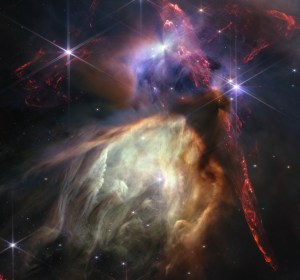Cassini Significant Event Report
For Week Ending 05/26/00
The most recent spacecraft telemetry data was acquired from the Goldstone
tracking station on Wednesday, 5/24. The Cassini spacecraft is in an
excellent state of health and is operating normally. Activities this week
include the first time use in the background sequence of the new 82.95k and
22.12k telemetry modes. The Backup ALF Injection Loader (BAIL) and Engine
Gimbal Actuator (EGA) portions of Periodic Engineering Maintenance were
executed. The Reaction Wheel Assembly (RWA) portion was replaced by an RWA
friction test, followed by transition to RWA control. Real time commands
were sent to update flight software for the Cosmic Dust Analyzer (CDA),
Composite Infrared Spectrometer (CIRS), Radio and Plasma Wave Science
(RPWS), and Ultraviolet Imaging Spectrograph (UVIS) instruments. The speed of the spacecraft can be viewed on the "Where is Cassini Now?" web page.
A joint Cassini-RPWS/Galileo Conjunction Experiment was performed. This
conjunction, like the one in February, provided the opportunity to observe
Jovian radio emissions in a stereoscopic sense. Both the Cassini and
Galileo spacecraft were very nearly aligned relative to Jupiter. Using the
small, but finite differences in viewing angle offers the possibility of
understanding some of the beaming characteristics of Jovian radio
emissions. One of our team members led an effort to do a similar
experiment during Instrument Checkout 1 (ICO1) and the Earth flyby using
Cassini and Wind (a spacecraft in Earth orbit). Those results have now been
accepted by the Journal of Geophysical Research (apparently the first
Cassini science paper to be published). They report that Jovian
decametric arcs have a beam width of 1.5 +/- 0.5 degrees and that those
radio emissions associated with the moon Io sweep around Jupiter with the
rotation rate of Io and not that of Jupiter. The Cassini observations
during this interval look very good and Jupiter was quite active in the
radio frequencies monitored. Galileo data was properly recorded and will
be available for analysis in a month or so.
A strategy meeting for Trajectory Correction Maneuver 14 (TCM 14) was held
and established the schedule and overall design strategy for this maneuver.
TCM 14 will be a main engine maneuver of about 0.5 meter per second and
will execute on June 14.
A telecon was held to discuss possible science observations during the
Saturn Orbit Insertion time period. This interval will provide the highest
resolution remote sensing data of the rings for the entire mission and
will provide unique data on Saturn's magnetosphere as well.
The plan to provide Science-data-over-the-Internet to remote sites during
ICO2 is ready. RPWS and Magnetospheric Imaging Instrument (MIMI) teams are
set to use this mode. Other instrument teams are verifying their ability
to accept data in this mode and should be ready by the end of this week.
System Engineering and Mission Support & Services Office team members met
to discuss the criteria for final transition from the Central Database
(CDB) to Distributed Object Manager (DOM) as the Cassini file repository.
DOM has been in operational use since January and the flight team is
currently comfortable with its use.
Additional information about Cassini-Huygens is online at http://saturn.jpl.nasa.gov.
Cassini will begin orbiting Saturn on July 1, 2004, and release its piggybacked Huygens probe about six months later for descent through the thick atmosphere of the moon Titan. Cassini-Huygens is a cooperative mission of NASA, the European Space Agency and the Italian Space Agency. JPL, a division of the California Institute of Technology in Pasadena, manages the mission for NASA's Office of Space Science, Washington, D.C.
Media Relations Office
Jet Propulsion Laboratory
California Institute of
Technology
National Aeronautics and Space
Administration
Pasadena, Calif. 91109.
Telephone (818) 354-5011































